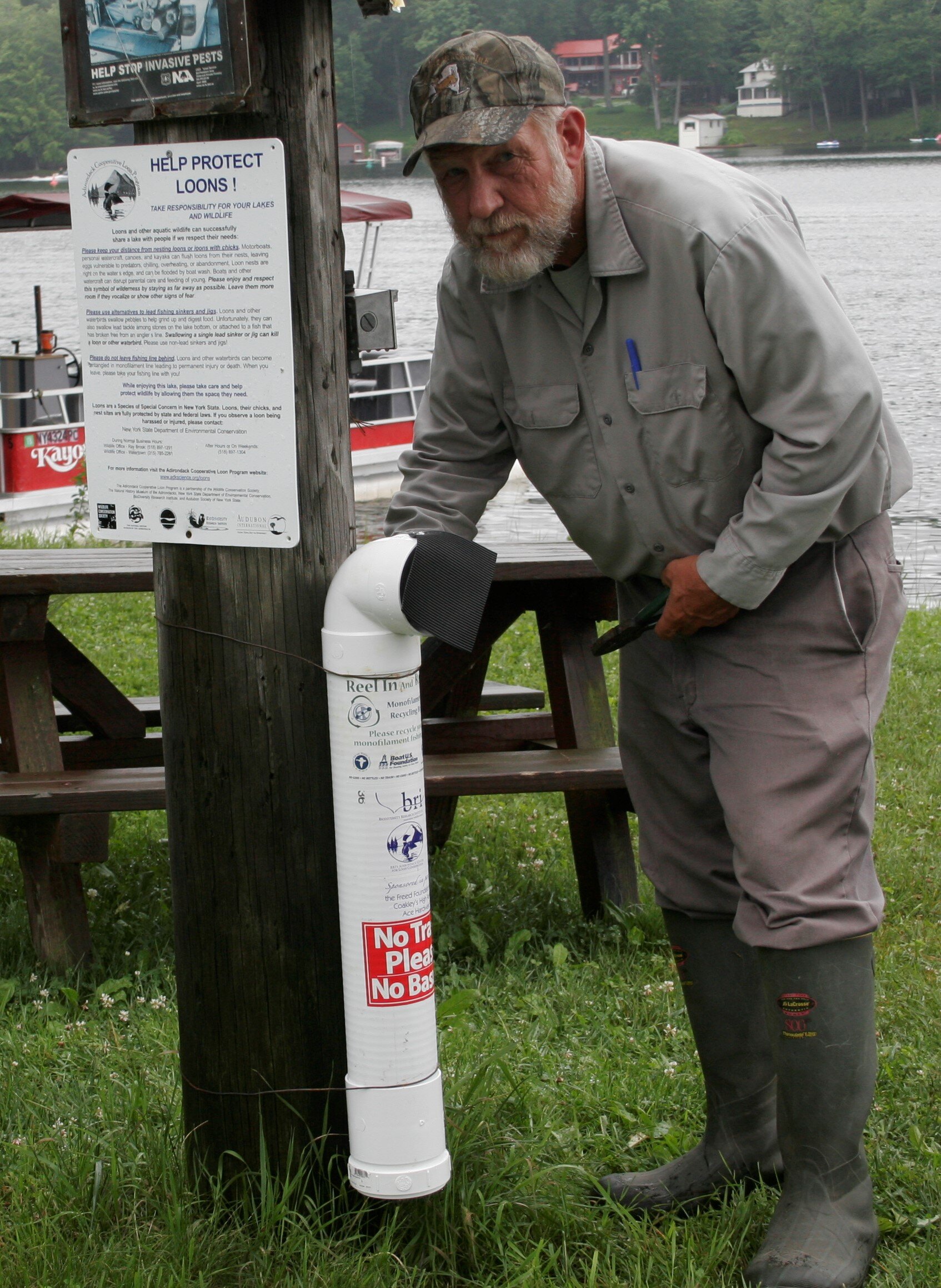Fishing Line Recycling Program
A loon with fishing line embedded into its cheek and wrapped around its neck.
Discarded fishing line can pose a real threat to loons and other wildlife. It’s not uncommon for anglers to need to cut fishing line or for fishing line to break while out on the lake, but leaving the line behind increases the chances of wildlife coming into contact with it, especially during the busy summer months when loons are nesting in the Adirondacks and there are more anglers out fishing.
Loons most often find themselves tangled in fishing line when they swallow a fish that still has fishing line attached to it. Loons tangled in fishing line experience serious injury and even death when they suffer wounds that become infected or are unable to properly feed and care for themselves. Their situation can be made even more serious if there is lead fishing tackle still attached to the line.
How can you help?
The best way to help reduce the amount of discarded fishing line in our lakes and shorelines is to collect any line that needs to be disposed of and take it with you when you’re done fishing for the day.
If you’re out exploring and find fishing line along the shoreline, under water, or stuck in trees, logs, or other places, please pick it up and recycle it! When it comes to picking up abandoned fishing line, a small action can make a big difference!
ACLC field staff and volunteers check fishing line recycling containers.
Request a Fishing Line Recycling Container
To help encourage proper disposal of discarded fishing line, the Adirondack Center for Loon Conservation offers fishing line recycling containers to interested community groups. There is no charge for the containers (unless they need to be shipped), but donations are always welcome to help us continue providing materials to our partners. Containers can be installed at boat launches, lake access points or anywhere that people must pass through to access the lake.
By requesting a container, we do ask that you volunteer to maintain the container over time. This means periodically checking on it and removing any deposited fishing line. The best way to dispose of used fishing line is to recycle it by mailing it to Berkley Recycling, a fishing line recycling facility in Iowa.
Rescuing Entangled Loons
Rescuers remove fishing line from a juvenile loon in 2021.
Our rescue teams of staff and volunteers do their best to intervene when we get reports of injured loons. Not every bird can be saved, but our rescuers are trained to assess difficult situations and treat injured loons to increase their chances of recovery and survival.
If you see a loon that is in distress because of fishing line entanglement, please call our office at 518-354-8636 to report the injured loon. Be prepared to share your location, name and contact information, and to provide a description of the loon. Photos or video can help us assess the situation more quickly.
Rescuing individual loons helps ensure that adult breeding loons will continue to successfully nest, raise chicks and maintain the population.
This project was made possible through the generous support of Northern New York Audubon, Genova Products, the NYS Council and Lake Champlain Chapters of Trout Unlimited, Algonquin Chapter of the Adirondack Mountain Club, Coakley’s Home and Hardware, Hotel Saranac, Adirondack Awards, Stacked Graphics, the New York Backcountry Hunters and Anglers, and Curtis Lumber.
This project is funded through a grant from the US Fish and Wildlife Service on behalf of the Bouchard Barge 120 Buzzards Bay Oil Spill Trustees.




